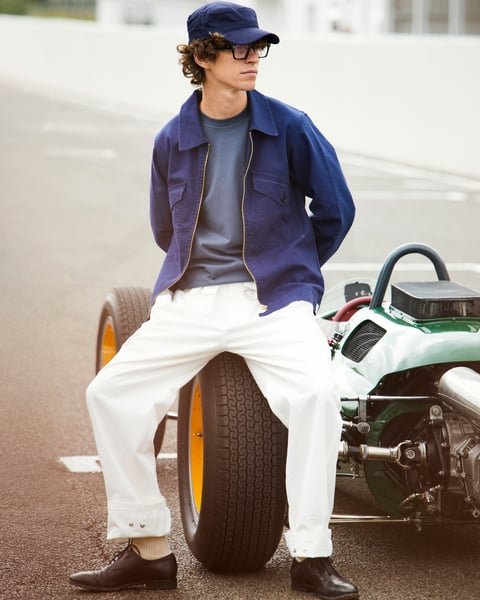Heritage
BMW’s original R nineT became one of motorcycling’s brightest and most original hits following its launch in 2014. The retro-themed naked boxer, powered by the 1170cc, air-cooled motor previously used by the R1200GS, until the adventure bike’s adoption of liquid-cooling, captured the zeitgeist brilliantly with its blend of classical style, character-rich performance and suitability for customisation.
Such was the nineT’s impact – evidenced by a lengthy waiting list and over 20,000 sales – that BMW has swiftly followed up with a family of related retro-themed, air-cooled boxers. For 2017 the original model, renamed the R nineT Roadster, will be joined by the naked R nineT Pure, half-faired Racer and Urban G/S – the latter inspired by the R80G/S that kick-started the “big adventure bike” trend in 1980. Meanwhile, the R nineT Scrambler, the first new family member, has already hit the streets.
Design
Given the current vogue for Scramblers, as popularised by Ducati and Triumph in particular, it’s no surprise to find BMW commencing its R nineT expansion project with an off-road model featuring high-level exhaust system and chunky tyres. BMW’s Scrambler uses the same DOHC boxer motor as the original Roadster. Its power delivery, up to a maximum of 110bhp, is unaffected by the new twin-silencer Akrapovic exhaust that helps the bike meet Euro 4 emissions regulations.
Despite its name, the Scrambler is not built for serious off-road use. Its new tubular steel frame has more relaxed steering geometry than the Roadster’s. Suspension at both ends has longer travel; the gaitered forks hold a larger, 19-inch front wheel. But part of BMW’s aim was to bring the price down, so the Scrambler’s tank is steel rather than aluminium, its wheels are cast instead of wire-spoked, and its front brake features Brembo’s conventional four-piston, non-radial calipers.
Performance
The R nineT family’s faithful air-cooled motor makes 15bhp less than the latest liquid-cooled boxer, but it’s a wonderfully flexible, rider-friendly lump and delivers a very healthy kick, accompanied by a distinctive, flat droning sound from the exhaust. The Scrambler’s sense of speed is accentuated by its upright riding position, dictated by a handlebar that is slightly higher than the Roadster’s. Wind tugs at the rider’s shoulders long before the top speed of about 125mph, but at lower speeds the Scrambler cruises effortlessly and smoothly.
Chassis performance combines confidence-inspiring handling with good ride quality, if not the more firmly suspended Roadster’s captivating agility. The Scrambler has a slightly more relaxed and comfortable feel, but still corners sufficiently accurately to be fun on a twisty road, helped by generous ground clearance and respectably grippy Metzeler tyres. It also provides plenty of stopping power, although the four-pot Brembo calipers require a firmer squeeze of the handlebar lever than the Roadster’s radial set-up.
Passion
BMW’s contender in the Scrambler scrap has an appealing blend of retro looks, character and all-round performance. In a way, this dual-purpose boxer is a throwback version of the R1200GS, featuring less power, weather protection, electronic assistance and suspension travel than the modern adventure model. On the plus side, as well as offering a heritage look it gains by being simpler, lower and lighter than the current GS – and less expensive, too.
Like the Roadster, the Scrambler is designed to be easily customisable and incorporates a detachable rear subframe. Accessories include a headlamp grille, engine bash-plate and wire-spoked wheels, plus the test bike’s single seat. The kitted-out Scrambler X variant features wire wheels, heated grips and LED indicators, and can come with knobbly rubber at no extra cost. Just a few years after BMW’s air-cooled boxer line looked to be on the way out, the old format has delivered another entertaining, versatile bike with heaps of rugged charm.
Price tag of our bike: £11,626 (basic price of £10,450 plus accessories including single bench seat, aluminium bar ends, LED indicators, heated grips and ASC traction control)
Photography courtesy of Arnold Debus and Peter Musch
R ninT
BMW
the goodwood test





















